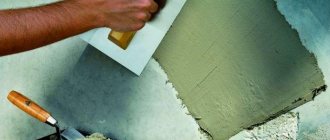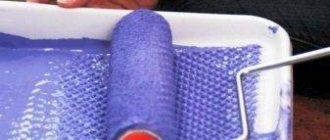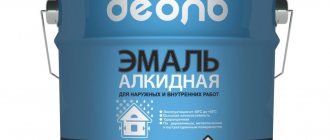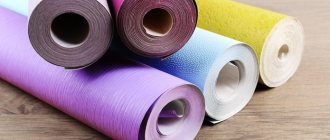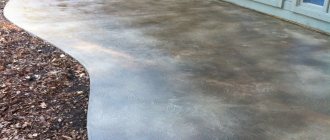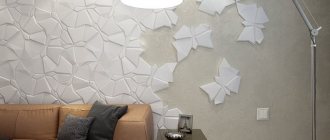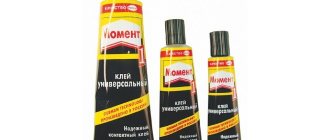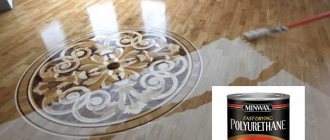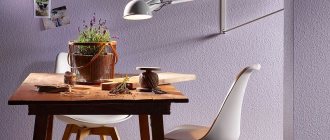| online big tits on mature www.sozrel.online |
External putty is used for finishing facades and external architectural elements.
- 1 Facade putty 1.1 Characteristics and composition
- 1.2 Features of application
Silicone putty for exterior use allows you to create smooth, beautiful surfaces.
This material allows you to create without unnecessary labor and financial costs:
- flat,
- durable,
- a stable surface that not only decorates, but also protects the facade from wear and damage.
We will tell you about the characteristics and rules for installing facade putty.
What is silicone plaster
Silicone plaster is a construction mixture made from synthetic silicone resins. Thanks to the presence of silicone in the composition, the mixture takes on all the properties of the latter: high plasticity, the ability to give any shape and excellent adhesion to most building materials. Similar characteristics are difficult to find in other compositions, so silicone plaster is unique in its kind.
Silicone-based products are sold ready-made and do not require dilution. Most of the compositions are grayish or white in color, and are easily tinted. In addition, after drying, the coating can be painted with some types of paints that adhere well to silicone.
To improve technical parameters and impart certain properties, modifiers, additives, and antifungal components are also introduced into the composition of the products.
What is silicone composition
Plaster based on synthetic silicone resins is quite plastic and capable of taking any shape, and also has a high degree of adhesion to other building compounds.
According to its characteristics, this species is unique, since it has collected a large number of advantageous qualities.
Compositions that are made on the basis of silicones do not require additional dilution. The silicone composition has a white or gray tint, which allows you to get any color by adding color to the mixture.
To improve the properties of the composition, special modifiers, additives or antifungal components are added.
Advantages and disadvantages of the material
Silicone plaster is suitable for application to concrete, cement, wood, gas silicate slabs, brick and other materials. The exception is smooth coatings, for example, made from oil paint: the plaster can simply roll off from them.
This building mixture has many advantages:
- Long service life. Silicone lasts for many years (from 20) without changing its appearance. It is very resistant to adverse factors and abrasion.
- Elasticity. This property helps not only to quickly and conveniently apply the composition, but also prevents it from cracking or crumbling during operation. Also, due to its elasticity, silicone plaster practically does not react to shrinkage of buildings, vibration of walls and other types of deformations.
- Mechanical strength. After hardening, the silicone coating is very difficult to scratch, tear off, or knock down, which further increases its demand and reduces the need for periodic renewal.
- Moisture resistance. Silicone literally repels moisture and prevents it from being absorbed into the base. This helps the outer walls not to deteriorate from the effects of precipitation, and the inner walls from the humidity in the house.
- Vapor permeability. Plaster eliminates the accumulation of condensation as it helps the walls breathe. This seriously reduces the risk of mold and allows you to combine silicone with polystyrene foam, mineral wool and other types of insulation.
- Antiseptic properties and cleanliness. After applying silicone plaster to the walls, you don’t have to worry about keeping them clean. The type of coating will always be attractive, because it repels dust, dirt, and prevents fats, oils, and technical fluids from sticking. Among other things, silicone resists the appearance of efflorescence on the surface of the walls.
- Possibility of use in any conditions. Silicone does not deteriorate even in extreme situations: with sudden changes in temperature, continuous exposure to water (up to 24–48 hours), constant exposure to ultraviolet radiation.
- Frost resistance. Most high-quality compositions can withstand up to 75–100 cycles of freezing and thawing without loss of properties and attractiveness.
- Fire safety. Silicone plaster belongs to class G1: it is a low-flammable composition, therefore it practically does not support combustion.
- Environmentally friendly. The material does not contain toxic components or organic solvents, so it can be used indoors and even in children's rooms, hospitals, and schools.
Even a beginner can apply plaster to the surface - the material is already ready for use, and no professional tools are required to apply it. An ordinary user will be able to create a coating with an original design from a silicone mixture, because the material is sold in different decorative options.
The disadvantages of silicone plaster are also worth noting. Its cost cannot be called low, so completely finishing the house can cost a decent amount. The price of acrylic or cement mixtures is much lower. Also, removing the annoying coating will not be easy.
The durability and strength of the material remain at a high level, so you will have to clean the walls with great effort. To mitigate these disadvantages, it is worth choosing silicone for wall decoration in cases where the repair is not planned to be repeated over the next 20–25 years. Then the material will serve as a very economical and convenient finishing option.
Where is plaster used?
Silicone compounds are suitable for all materials except very smooth, low-porosity ones. Plaster does not adhere well to substrates coated with varnishes, oil paints, as well as to structures made of metals and alloys. Silicone is best suited for aerated concrete, foam concrete, brick, wood, fiberboard, plywood, asbestos-cement boards, which have many large pores and are characterized by high vapor permeability.
The silicone mixture can be applied to old mineral plasters without varnish or dispersion coatings. It is important that the surface is durable and does not have any falling off areas or crumbling pieces.
Most often, silicone-based products are used to process:
- facades of houses, dachas;
- office buildings;
- industrial buildings;
- architectural forms and compositions;
- internal walls of apartments, cottages.
Types of silicone plaster
Depending on the scope of application, the material is divided into the following groups:
- For interior work. This plaster is suitable for cladding walls, niches, panels, and for creating frescoes, panels, and frames.
- For outdoor work. Plasters of this group are characterized by a higher level of resistance to weathering and frost, as well as increased strength and wear resistance. They are ideal for finishing facades and other street work, and can also be used for wall insulation.
- Universal purpose. Suitable for any type of use, both indoors and outdoors.
Silicone plasters also differ in the texture they create. In stores you can find the following varieties:
- "Bark beetle." Outwardly, it resembles tree bark eaten away by bugs. When choosing the appropriate color, it can become as close as possible to the natural material.
- "Fleece" ("Lamb"). It has original curls, like those on lamb's wool. They can be formed using a special type of mashing of the mixture.
- "Fur coat". Gives the surface a rough appearance, allows you to interestingly combine different shades with a transition into each other.
There are also silicone mixtures with the addition of natural stone chips, as a result the coating will resemble stone. Most often, this material is used for finishing facades.
Silicone mixture with the addition of natural stone chips
Silicone-based plasters
Several types of silicone plaster are produced, differing in different decorative textures on the coating surface:
“Bark beetle” plaster , which is wood eaten away by insects. One of the most popular types of finishes. The grooved texture is obtained due to the mineral additives of marble, quartz or onyx chips of different fractions. Depending on the filler fractions, the depth of the grooves varies. It is used for both internal and external plastering.
Figure 2. Bark beetle plaster.
Plaster "Lamb". It is a thin decorative coating with a grainy structure. Suitable for application on all mineral substrates, gypsum fiber sheets, CBPB inside and outside buildings.
Figure 3. Lamb plaster.
Pebble plaster as a filler contains marble or granite chips, or artificial stones of various sizes. The structure of the pattern depends on the size of the stone chips.
Figure 4. Pebble plaster.
Silicate-silicone. In addition to silicone resins, it contains liquid potassium glass. Increased hydrophobicity and resistance to weathering makes plaster an ideal option for decorating facades. The high cost does not allow widespread use in building decoration. Before choosing this type of plaster, you need to calculate the economic feasibility of its use. In addition, silicate-silicone plaster hardens very quickly and you need to have skill to apply it.
Figure 5. Silicate-silicone plaster.
Acrylic silicone. Made on the basis of acrylic polymers and silicone resin with marble chip fillers and water-repellent additives. It is characterized by increased adhesion, elasticity and low water absorption.
Figure 6. Acrylic-silicone plaster.
Important . The consumption of the solution depends on the fraction of stone chips. The smaller the grain, the thinner the layer and the less solution is used.
Venetian plaster is used for finishing interior and exterior walls. Made from silicone resins, granite or marble stone flour and dyes, it provides a luxurious, high-quality finish. The peculiarity of the production of Venetian plaster is the multi-layer coating of the plastered surface with natural or artificial wax. This finish is not afraid of moisture and is suitable for decorating bathrooms, bathrooms and kitchens.
Figure 7. Venetian plaster in the interior of the apartment.
Application technique
It is necessary to thin the plaster if it has dried out and become too viscous. In this case, you need to pour in a little clean water, and then mix the mass with a construction mixer or a drill with an attachment. It is important to carry out all work with silicone-based plaster quickly, as it hardens in a short time. The mixture is easy to apply: it goes on smoothly and does not require repeated smoothing.
Surface preparation
First, you need to remove all peeling plaster or pieces of other old coating, and level the base. Large, deep defects should be repaired using a cement-sand mixture. Immediately before work, the walls need to be cleaned of dust and primed with a deep penetration primer (preferably also silicone-based).
Walls in new houses are usually prepared in this way:
- Small and medium-sized cracks are not sealed, as plaster can easily cope with them.
- If there is a layer of insulation, a reinforcing mesh is applied to it, then a primer, and only then plaster.
- Be sure to eliminate traces of efflorescence, grease stains, soot, and biological damage (fungus, mold).
Before plastering work, the base must be completely dry.
Tools for work
To apply plaster, you should prepare spatulas of different sizes made of plastic or metal, as well as devices for creating the desired texture: construction floats, rollers, sponges. For priming you will need a brush or roller, and to assess the evenness of the surface - a level. To make a drawing or carefully match different shades of plaster, you need to buy masking tape (for pasting borders).
Excess material is removed with a clean rag, and the tools are washed in containers with water, which are also best prepared in advance. If you decide to tint the plaster yourself or add stone chips into it, you should carry out such actions using a construction mixer, since it is impossible to achieve uniform mixing manually.
Application of material
Usually the solution is applied with a spatula or trowel. Movements are carried out vertically. Place a portion of plaster on a large spatula, taking it with a small tool, then transfer the mass to the wall. Spread the composition with a layer of the required thickness (no less than the size of the filler grains, if present). The tool is held at an angle of 60 degrees relative to the base, decreasing the angle when completing the stroke. Excess composition is removed from the spatula and placed back in the bucket.
They usually start work from the corner of the wall and move towards another corner. After filling an area of a certain size, level the plaster with a trowel or other device to give the desired decorative effect. The grater is moved in circular, straight or chaotic movements, without lifting it from the surface. Act quickly to treat the freshly laid layer before setting.
If it is not immediately possible to apply the composition to the entire wall, apply masking tape along the strip of the future joint. The next day, continue plastering without removing the tape: this will help prevent fresh product from getting onto what has already hardened and prevent the appearance of an unsightly thickening.
In addition to the classic manual application of silicone plaster, it is possible to use other techniques:
- sprinkling;
- spraying from a gun.
After the plaster has dried, finishing painting is carried out if the mixture has not previously been tinted. They use special paints of the same shade or make drawings, compositions, or interesting combinations of tones.
Is it possible to paint silicone plaster with silicone paint?
The plaster is ideally combined with silicone and silicate paint compositions, which adhere firmly to it, do not flow, and lay down in an even, smooth layer. Painting work is carried out only after the solution on the wall has completely dried. However, in practice, they try to pre-tint the plaster so that it immediately has the desired color. This will seriously reduce the labor intensity of the process, as well as financial costs.
Safety precautions
Silicone plaster for facades is harmless to humans, but you still need to work with it in compliance with safety measures. If application is carried out mechanically, you must protect your eyes from splashes by wearing glasses. The same is done when treating ceilings with the composition. Before starting wall cladding, it is important to turn off the power to sockets and switches. If the solution gets into the eyes, rinse them with plenty of water.
Consumption of funds
The specific consumption rate is determined by the method of applying the plaster. Usually it is 2.7–3.3 kg/sq. m. The number can be affected by the type of filler, the quality of preparation and evenness of the wall, and the user’s skill level.
Caring for silicone plaster
Due to their strength and chemical resistance, surfaces coated with silicone plaster do not require maintenance. Dirt does not stick to the outdoor surface, and most often there is no need to wash it. In addition, the outer walls will be washed by rain and will always be in an attractive condition. If necessary, you can wash the walls with a regular hose. The cladding in the house is completely washed with water and detergents.
Coating Methods
If the consistency of the silicone plaster has become too viscous or has begun to dry out, it can be diluted with clean water to the desired thickness.
The composition should be stirred with a construction mixer or use a drill with a special attachment. Work with silicone composition must be carried out quickly, as it tends to harden quickly.
The coating is applied without much difficulty and does not require additional leveling of the layer.
How to prepare the surface
First of all, before carrying out work it is necessary to properly prepare the surface:
- remove old coating from the wall surface;
- level the base of the walls;
- repair defects using cement-sand plaster;
- clean the surface from dust and dirt;
- apply a primer or primer (silicon-based would be ideal).
Surfaces in new premises are prepared in the following way:
- Minor defects and cracks do not need to be repaired, as the silicone composition will hide them.
- The material for insulating rooms must first be coated with reinforced mesh, then primed, and the next step is to apply plaster.
- It is necessary to remove various contaminants (grease, dust, soot); get rid of fungus and mold, remove efflorescence.
All previous layers must be completely dry before applying the plaster.
Tools for silicone plaster
To work with silicone plaster you will need:
- metal or plastic spatulas of different sizes;
- construction floats, rollers or sponges to create the desired texture on the surface;
- paint rollers and brushes for applying primer;
- level to assess the evenness of the walls;
- masking tape to protect and separate boundaries on surfaces.
To add color or natural stone chips to the mixture, you must use a construction mixer, since it is almost impossible to mix the material correctly by hand.
Excess material should be removed using waste cloth (rags). To wash rollers and brushes, a container of plain water will suffice.
Plaster application process
Trowels and spatulas are used to apply the solution. Movements in work should be smooth and vertical.
The mixture is applied to a large spatula using a smaller tool, and then only transferred to the surface of the wall. The coating layer is applied no thinner than the size of the filler inclusions.
The spatula should be held at an angle of approximately 60 degrees relative to the base of the surface. In this case, the angle should decrease in the final strokes.
If there is any material left on the instrument, it must be put back into the container with the mixture.
The coating is applied from one corner of the wall towards the other. After applying the coating layer, in order to create relief and texture, sponges and construction floats are used, which should be walked over the surface. Movements should be circular, chaotic and fast without leaving the surface, as the material dries quickly.
Painting tape will help avoid joints on the walls. To do this, it is glued at the place where the application of the material currently ends.
When the work continues, the material can be applied over the masking tape, and at the very end of the application work it can be removed.
For silicone plaster, the following methods of application are also used:
- using a construction sprayer;
- sprinkling.
Combination of silicone plasters and paints
The silicone composition works well in combination with paints based on silicones or silicates.
Paints are applied to the surface only after the previous layer of plaster material has completely dried. The paint layer goes on smoothly and without smudges.
To save money and simplify the painting process, it is common practice to immediately add the desired color to the ready-made plaster mixture.
Precautions at work
To work with silicone plaster, you must follow safety precautions.
This includes the use of personal protective equipment, such as goggles, when applying the material using spray equipment, as well as when applying the material to a ceiling surface.
If drops of the solution get into the eyes, they should be rinsed immediately with water. All sockets and switches must be disconnected from electricity before starting work.
Material consumption
Material consumption depends on the evenness of the wall surface, on the quality of the preparatory work, on the type of filling components, as well as on the professionalism of the person who works with this material.
Often, material consumption ranges from 2.7 to 3.3 kg/sq.m.
How to care for silicone plasters
The silicone mixture is not picky in use and care. Since the composition of the material is quite durable and resistant to chemical attack, dirt and dust do not stick to it.
To wash street facades, you can use a hose with water pressure. The surface of the walls indoors can be washed using cleaning products.
Recommendations for selection
When purchasing plaster, you need to pay attention to the following factors:
- Grain. To obtain a coating with a smooth texture, select the minimum grain size, and vice versa.
- Hue. A white or grayish mixture can always be tinted directly in a supermarket or specialty store.
- Scope of application. If the material is purchased for outdoor use, it must be frost-resistant.
- Best before date. The composition must not be expired, otherwise it will not be able to meet the declared characteristics and properties.
For facade work, the most popular plasters are those with a bark beetle or fur coat texture. They go well with stone and brick finishing. No less in demand are compositions with stone chips already introduced into them: marble, granite.
Features of choice
When choosing material, pay attention to the following indicators:
- Best before date. It is advisable that the mixture was made no more than two to three months ago.
- Buy materials in large construction stores, where you are less likely to encounter fakes. In addition, the storage conditions for the material are usually observed there.
- Give preference to materials from reliable and trusted manufacturers who have been existing in the construction market for a long time.
- The texture of the plaster depends on the size of the crumbs. For facades, plaster with coarse grains is suitable. A fine fraction will create a more delicate and smooth surface texture.
- If you cannot find a material of a suitable shade, purchase paint for plaster separately.
Important. When purchasing silicone plaster, always ask the seller for quality documents.
If you are planning renovations in an apartment, house or office, you should pay attention to silicone plaster. The correct choice of material is a guarantee of quality, reliability and durability of decorative finishing.
Manufacturers and cost
Among the most famous and high-quality products that are sold in stores, it is worth mentioning the following:
- Weber (Vetonit). This brand produces several different plasters based on silicone and silicate-silicone. They are sold in standard colors and are suitable for tinting. Can be painted a day after application. They have a low price and are frost-resistant.
- Ceresit. It produces ordinary and “pebble” plasters for use inside houses and for finishing facades. The mixtures are suitable for enhancing thermal insulation and can be applied to plasterboard, fiberboard, OSB, concrete, cement, and gypsum.
- Caparol. Plaster allows you to create a beautiful matte finish: smooth, “bark beetle”, “pebble”. The brand produces white and transparent silicone-based compounds that have increased strength characteristics.
- Kreisel. The mixtures tolerate moisture, contact with water, and regular frosts well. Available in several basic colors with different textures.
The average cost of a bucket of silicone plaster weighing 25 kg is 2–2.5 thousand rubles. Mixtures with the addition of stone usually have a higher price (up to 3–3.5 thousand rubles).
Silicone plaster is a product that has appeared on the market recently, but has already managed to win the favor of professionals and users. It has high quality, appearance and wear resistance, and is easy to apply.
